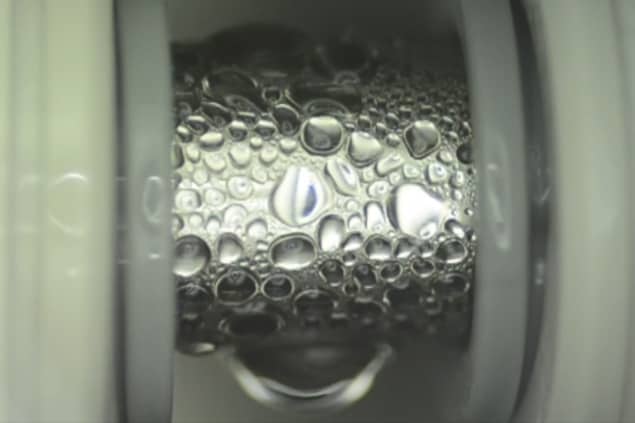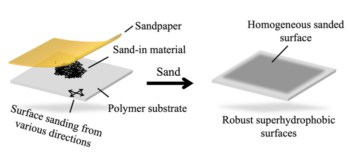
A new surface coating that could boost the efficiency of refrigerators and other industrial systems that rely on condensers has been developed by Kripa Varanasi and colleagues at the Massachusetts Institute of Technology. The thin polymer layer can be deposited on a range of different surface shapes and materials to enhance the formation and shedding of low-surface-tension droplets. Their discovery could ultimately increase the efficiency of a wide variety of large-scale industrial processes by almost 2%, creating a significant dent in their greenhouse gas emissions.
Condensation plays an important role in many large-scale industrial processes including refrigeration, liquification, waste heat recovery and distillation. Unlike water vapour, which condenses on a cold surface producing droplets that coalesce and quickly drip away, many industrial substances (such as ethanol and hexane) have a much lower surface tension. Instead of forming droplets, these liquids will spread out across the surface of a condenser in a process called wetting. This forms an insulating layer that limits heat transfer and therefore inhibits the operation of the condenser.
In their study, Varanasi’s team set out to combat this problem by creating a surface on which the low-surface-tension substances would form droplets, which would coalesce over time before dropping-off under gravity. To do this, the researchers first developed a technique for depositing a thin polymer coating onto surfaces, without inhibiting heat transfer itself. This involved a technique called initiated chemical vapour deposition (iCVD), in which a surface reacts with a gaseous polymer to create a micron-thick solid layer.
Titanium and steel
Varanasi and colleagues used iCVD to deposit polymer layers onto a wide variety of substrates, including both flat and pipe-shaped surfaces of steel and titanium. In each case, they observed droplets forming readily on the surfaces and little evidence of wetting. What is more, the droplets coalesce and were eventually shed under gravity.
Since iCVD is a relatively simple process, the team says that it could be used to create large, industrial-scale components. Furthermore, iCVD could be used to retrofit existing equipment, thereby minimizing costs. As well as being durable even in high wear-and-tear industrial environments, Varanasi’s team says that their deposited polymer could allow for anywhere between a four- to eightfold improvement in heat transfer. Ultimately, this would equate to a 1.8% improvement in the overall energy efficiency of some industrial systems – which they say is a significant increase that could help in the ongoing fight against climate change.
Varanasi says that the coatings could play a useful role in systems based on the organic Rankine cycle – which are used for generating power from waste heat in a variety of industrial processes. “These are inherently inefficient systems,” he says, “but [iCVD] could make them more efficient.”
The research is described in Joule.



